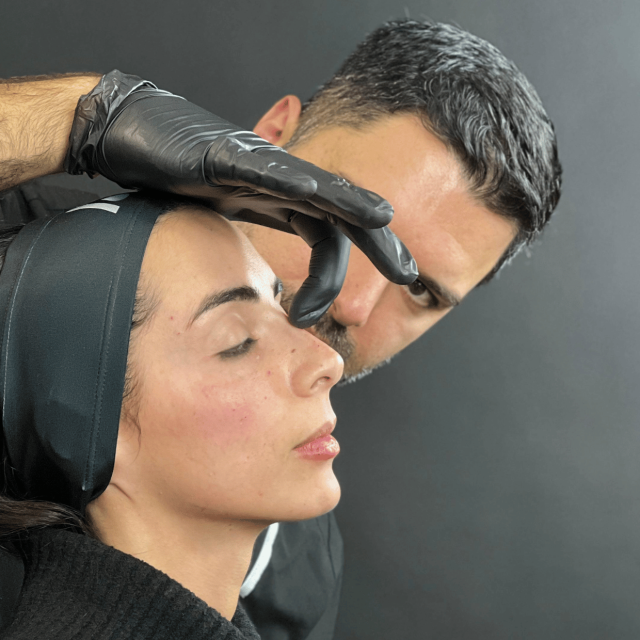
At SRGN, we specialise in post surgical nose correction with non-surgical rhinoplasty. Perfecting your results and ensuring you leave our clinic feeling completely satisfied is our priority.

Post-surgical nose correction is often sought by individuals who have previously undergone rhinoplasty but are dissatisfied with their results. This dissatisfaction may stem from issues such as asymmetry, unwanted bumps, breathing difficulties, or simply a desire for further refinement. These concerns can arise from changes that occur during the healing process, the natural ageing of the face, or a need for additional adjustments to achieve the desired aesthetic.
Dr Ayad Harb, a world-renowned plastic surgeon and pioneer on non-surgical rhinoplasties, understands the intricacies involved in revision rhinoplasty. With a keen eye for detail and a commitment to excellence, Dr Harb offers tailored solutions that address each patient’s unique concerns, ensuring a natural, harmonious result that enhances both function and appearance.
After an initial rhinoplasty, some patients may notice slight asymmetry or irregularities. These can be corrected with surgical revision or non-surgical rhinoplasty using dermal fillers to smooth and refine the nose’s shape.
Functional issues like breathing difficulties can occur after rhinoplasty. These issues are addressed through surgical correction to restore proper nasal function while maintaining the aesthetic improvements.
Small bumps or imperfections may remain or develop after surgery. These can be treated with non-surgical rhinoplasty using dermal fillers, offering a non-invasive way to achieve a smoother contour.
Non-surgical rhinoplasty is a highly specialised treatment offered by none other than Dr Ayad Harb, the world’s leading nose clinician. With an unparalleled experience of treating over 12,000 noses of all shapes and sizes, Dr Harb uses advanced filler techniques to reshape and refine the nose without the need for surgery by using his 3-Point-Rhino technique. This procedure offers a subtle yet effective solution for those seeking to enhance their nose’s appearance, providing immediate results with minimal downtime. Whether it’s addressing a hump, a droopy tip, or any other concern, Dr Harb’s expert hands ensure a beautifully balanced and natural look tailored to your unique facial features